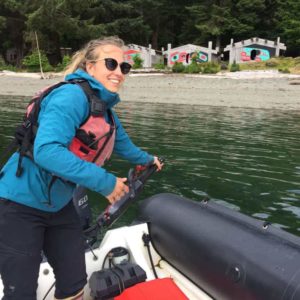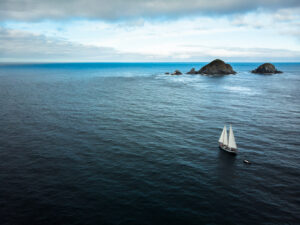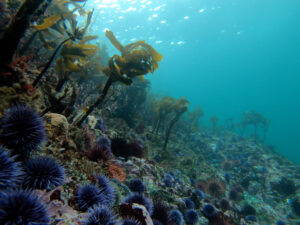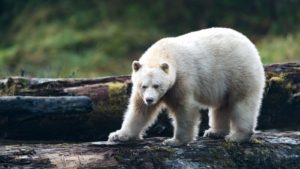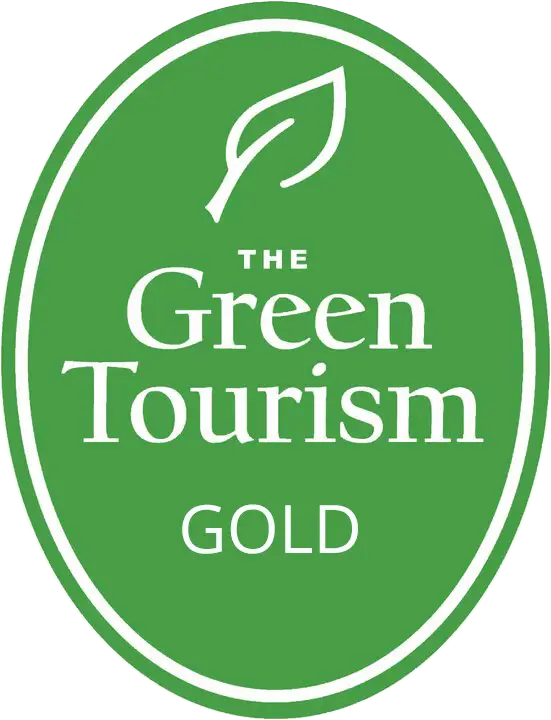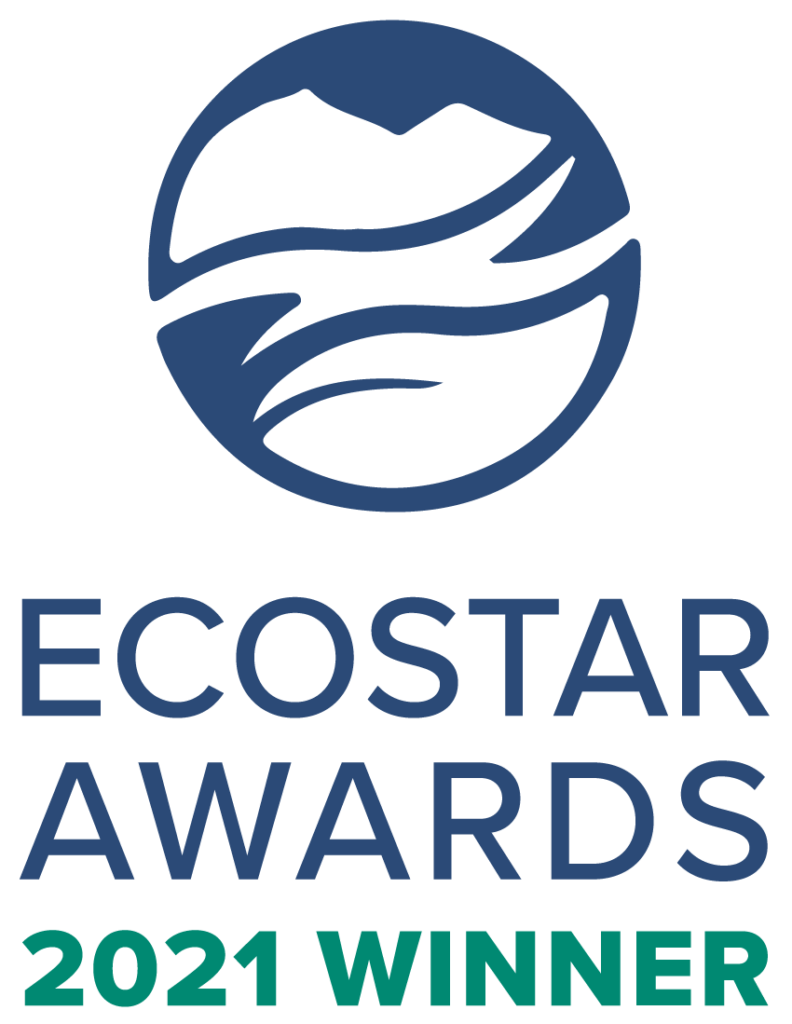Chixuu Tll iinasdll: Nurturing Seafood to Grow
In every region we explore on the BC coast we experience pockets of unique microclimates and ecosystems, each with its own diversity of flora and fauna. In Gwaii Haanas National Park Reserve, National Marine Conservation Area Reserve, and Haida Heritage Site there are many areas that exceed our expectations of abundance and diversity – but something is missing here and has been for over 200 years.
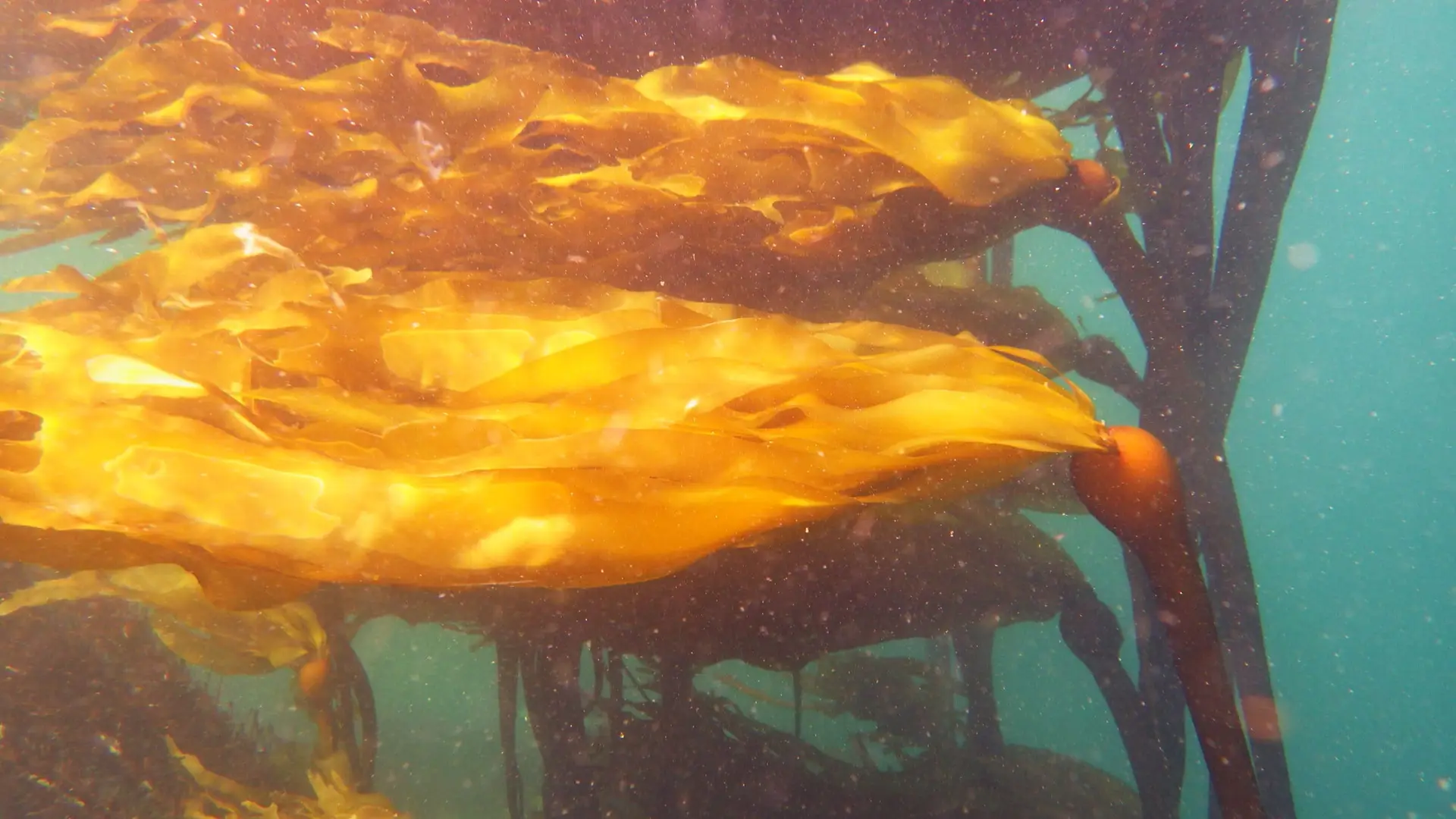
Kelp forests are an integral part of coastal ecosystems and communities. They provide food and habitat for a multitude of species from juvenile rockfish to endangered northern abalone (GaalGuuhlkyan), and with this, an abundant feeding ground for large fish, including lingcod (Skaynang), salmon (Chiina), and halibut (Xaagu), and marine mammals such as sea otters (Kuu), seals (Xuud), sea lions (Kay), and whales (kun and SGaana). Kelp forests also create natural breakwaters that diffuse waves and eliminate shore erosion, as well as create safe passageways for small vessels.
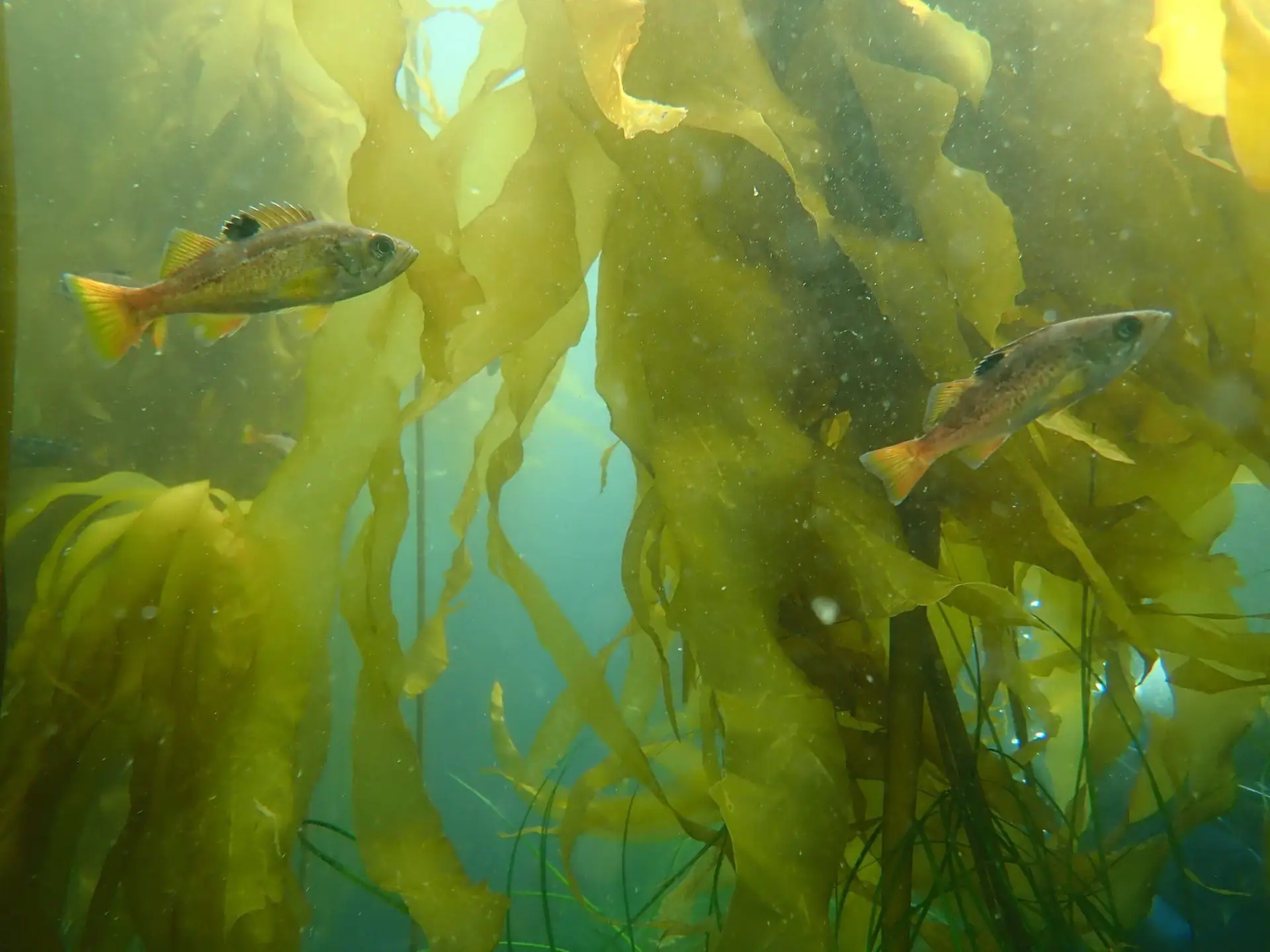
So, what changed within this important ecosystem to no longer support an abundance of kelp in Gwaii Haanas? In the early 1800s, this underwater region would have looked very different than it does today. The arrival of Europeans and the onset of the North Pacific maritime fur trade led to the extirpation (local extinction) of sea otters – a keystone species in coastal ecosystems. Despite efforts to reintroduce sea otters to other areas of the British Columbia coast, they have yet to return to the waters surrounding Haida Gwaii. As a result, the ecosystems to which they belonged have changed radically. Without otters consuming their favourite diet of sea urchins (Guuding.ngaay), urchins now had nothing but time to voraciously eat their own favourite food of choice – kelp.
And so they ate, and ate, and ate…
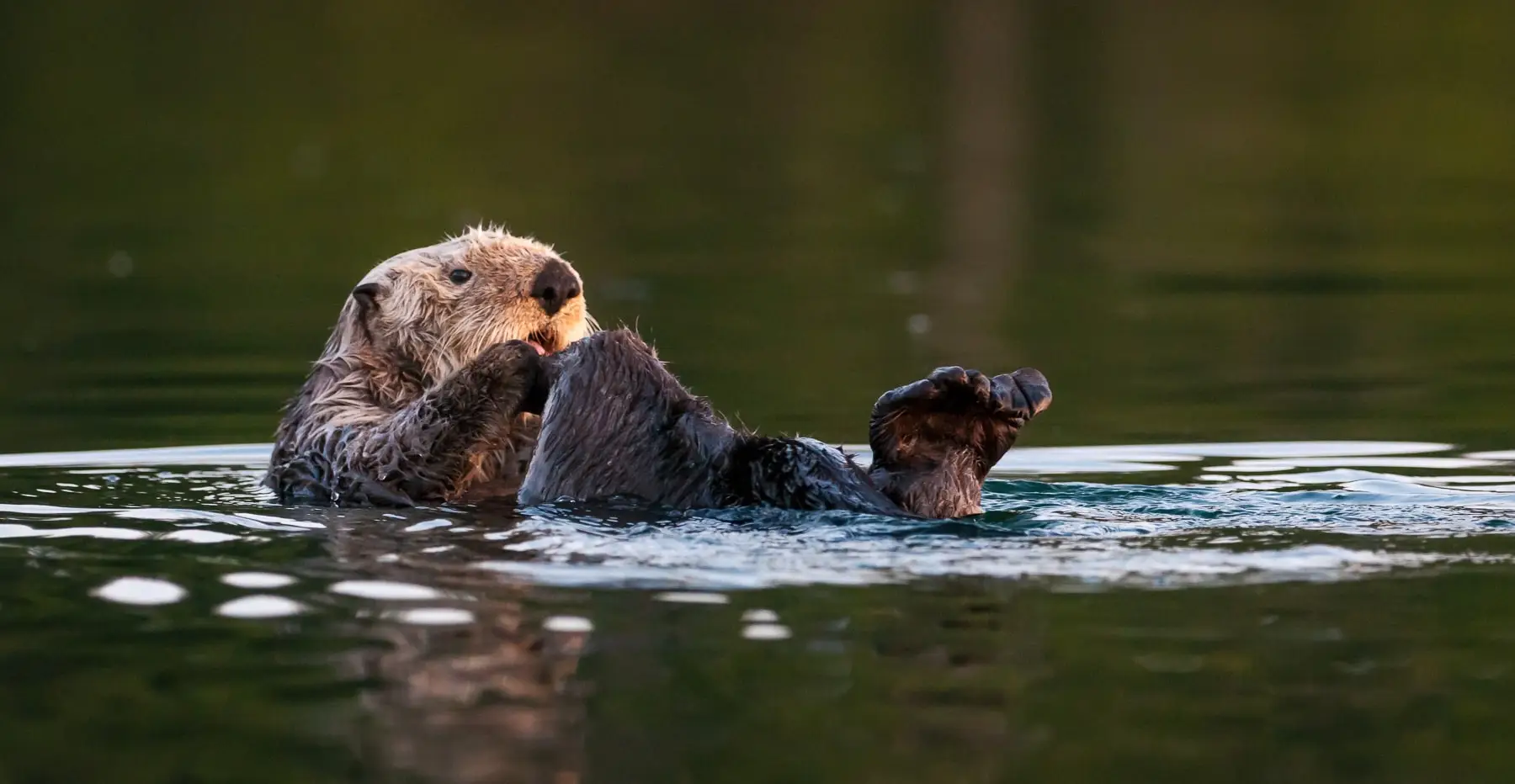
Without sea otters keeping the urchins in check, this ecosystem was thrown off balance, and as we’ve discovered, no sea otters mean a hyper-abundance of urchins and drastically reduced kelp forests. And, without these highly productive underwater forests, the abundance and diversity of species that rely on healthy kelp forests to survive have also been greatly reduced.
As urchin populations increased they began monopolizing valuable underwater real estate, creating widespread urchin “barrens” devoid of kelp and associated species. One might think that once the kelp is gone, the urchins would then die off too, however, this isn’t the case. Once the food supply is devoured, urchins go into a more dormant state and slow their metabolism down where they require less food, obtaining enough from the water column to survive. Not only have they mowed down their own buffet, but for all of their neighbours around them too, including abalone
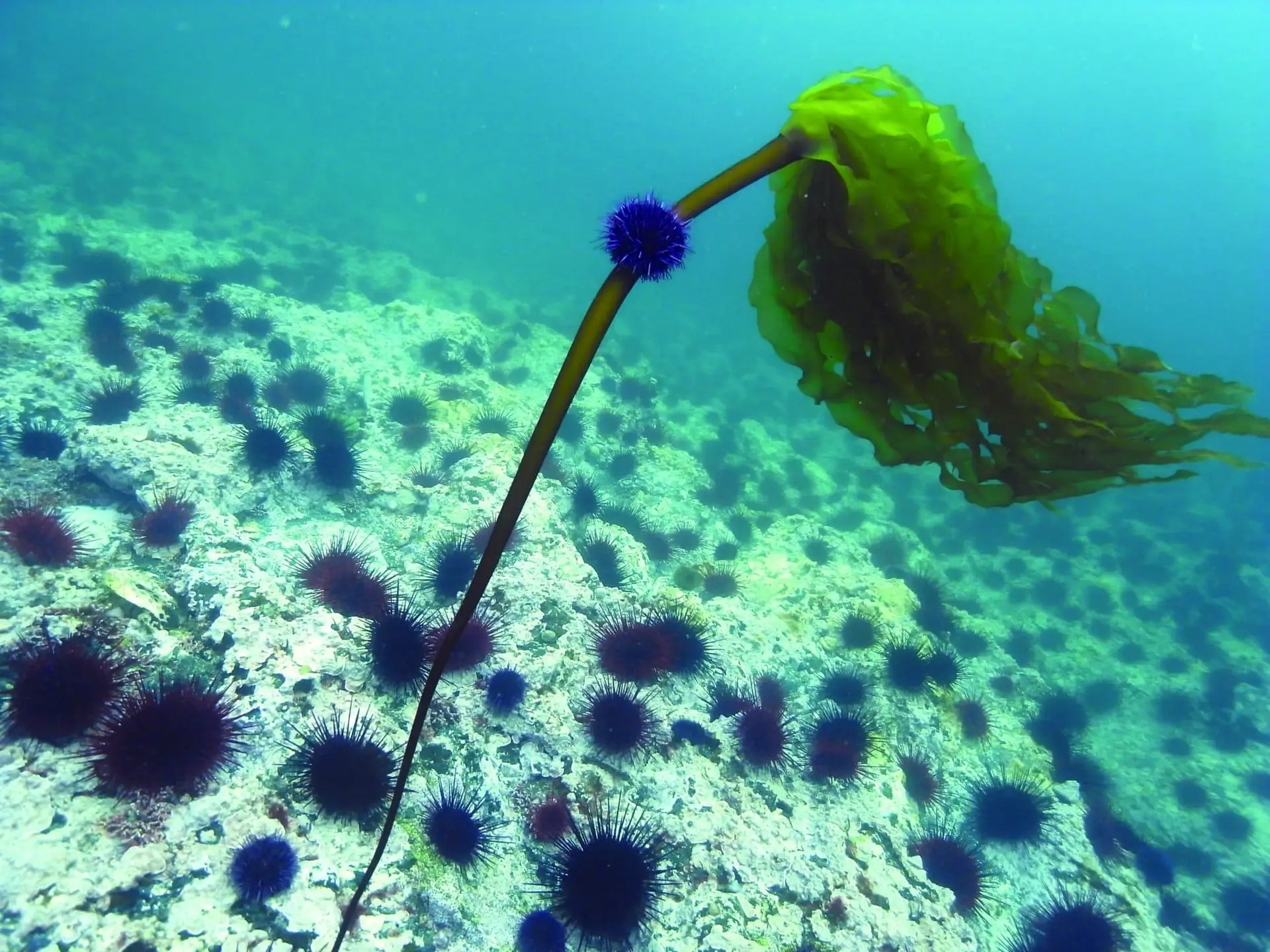
There is a saying in Haida – well, more of a way of life, as well as many Indigenous Nations – that is to “make things right again.” Much of this saying is in reference to reconciliation efforts from colonial governments and repatriation efforts to bring things to their rightful home again, be that land and title, human remains, “artefacts” and belongings, or perhaps, in this case, an entire ecosystem. Some action was taken to disrupt, and now it must be made right.
In an effort to make things right again in Gwaii Haanas, a three-kilometer area around Murchison Island (Gaysiigas Gwaay), was recently set aside for the Chixuu Tll iinasdll: Nurturing Seafood to Grow Project. This project, aimed at restoring kelp forest ecosystems, is made up of a wide collaboration between many organizations, industries, and academic institutions all working together, including the Council of the Haida Nation, Parks Canada Agency, Fisheries and Oceans Canada, Haida Fisheries, the Pacific Urchins Harvesters Association, Florida State University, University of New Brunswick, and the University of British Columbia.
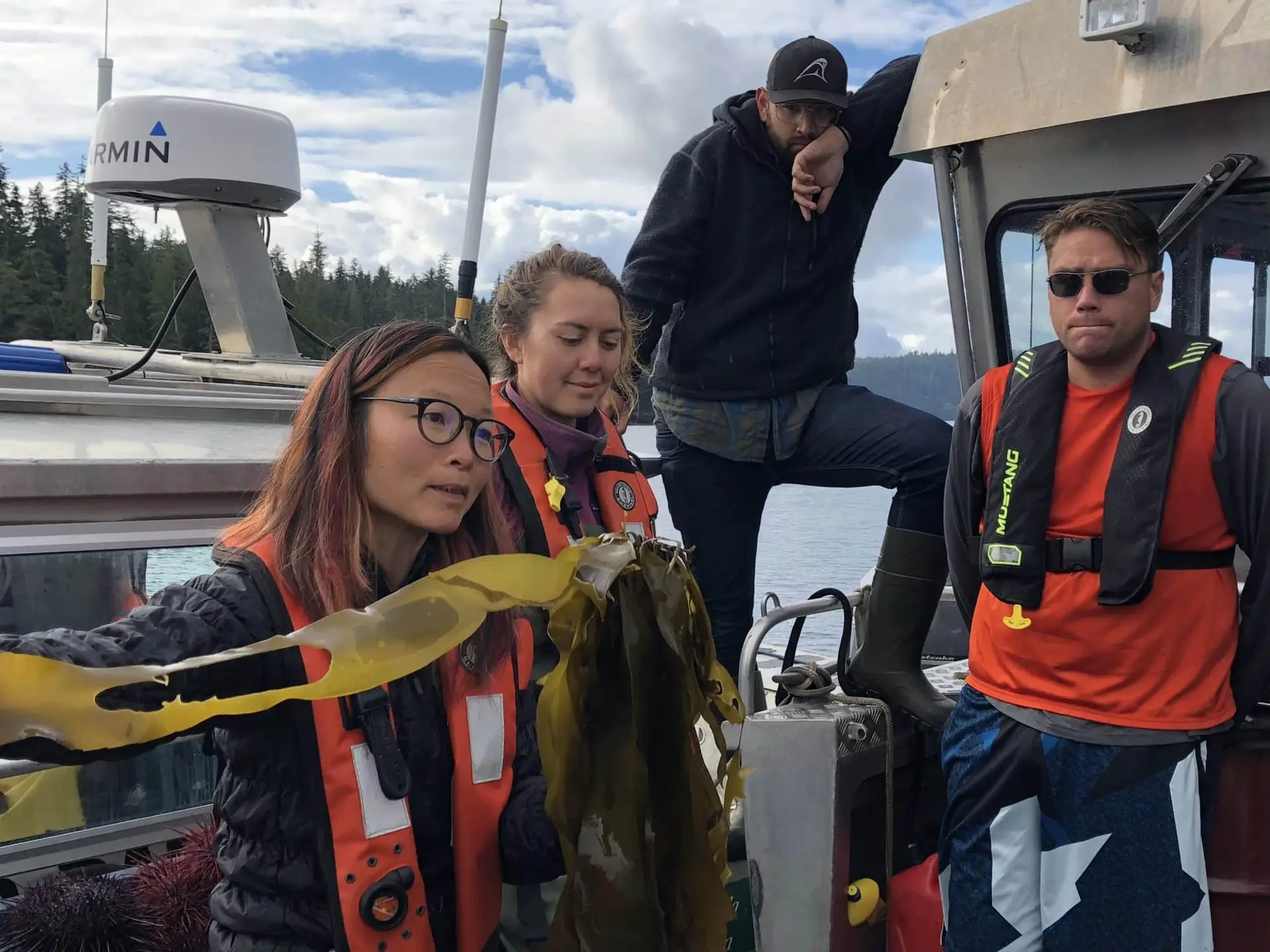
Kelp restoration work is now well underway to transform urchin barrens back into lush kelp forest ecosystems. We sat down with Dr. Lynn Lee, project team lead and marine ecologist with Gwaii Haanas, to find out how the restoration is going a year into the project. She informed us that the dive team – scientific divers, commercial urchin fisherman, and the local Haida Fisheries divers – is working to remove up to 75% of the urchins on this site. “We’re not getting rid of urchin entirely, but they are being reduced significantly to be more consistent with densities in the past when there were sea otters around,” says Lee.

The process of urchin removal varies based on a few factors, and when possible, the urchin roe is used for food, but mostly they are being cracked open and left to decay on the seafloor. Lee informs us that every effort is taken to ensure the community and commercial fishery can use anything harvestable for food first.

“Because there was so little kelp in this area, the quality of those urchins were so low, so they couldn’t take them to market,” she explains. “Most of them didn’t actually have roe and were just ‘zombie urchins’ in the deep, because they don’t have enough energy to produce if they don’t have enough to eat,” she adds. The research and restoration team is already amazed at the positive results they’re seeing. They didn’t expect to find as much kelp recovery so soon into the project. “We have permanent pins that mark the transect lines, so we know exactly what they looked like the year before the restoration work. It went from basically no kelp at all – almost zero – to hundreds of kelp. It’s quite amazing,” says Lee excitedly.
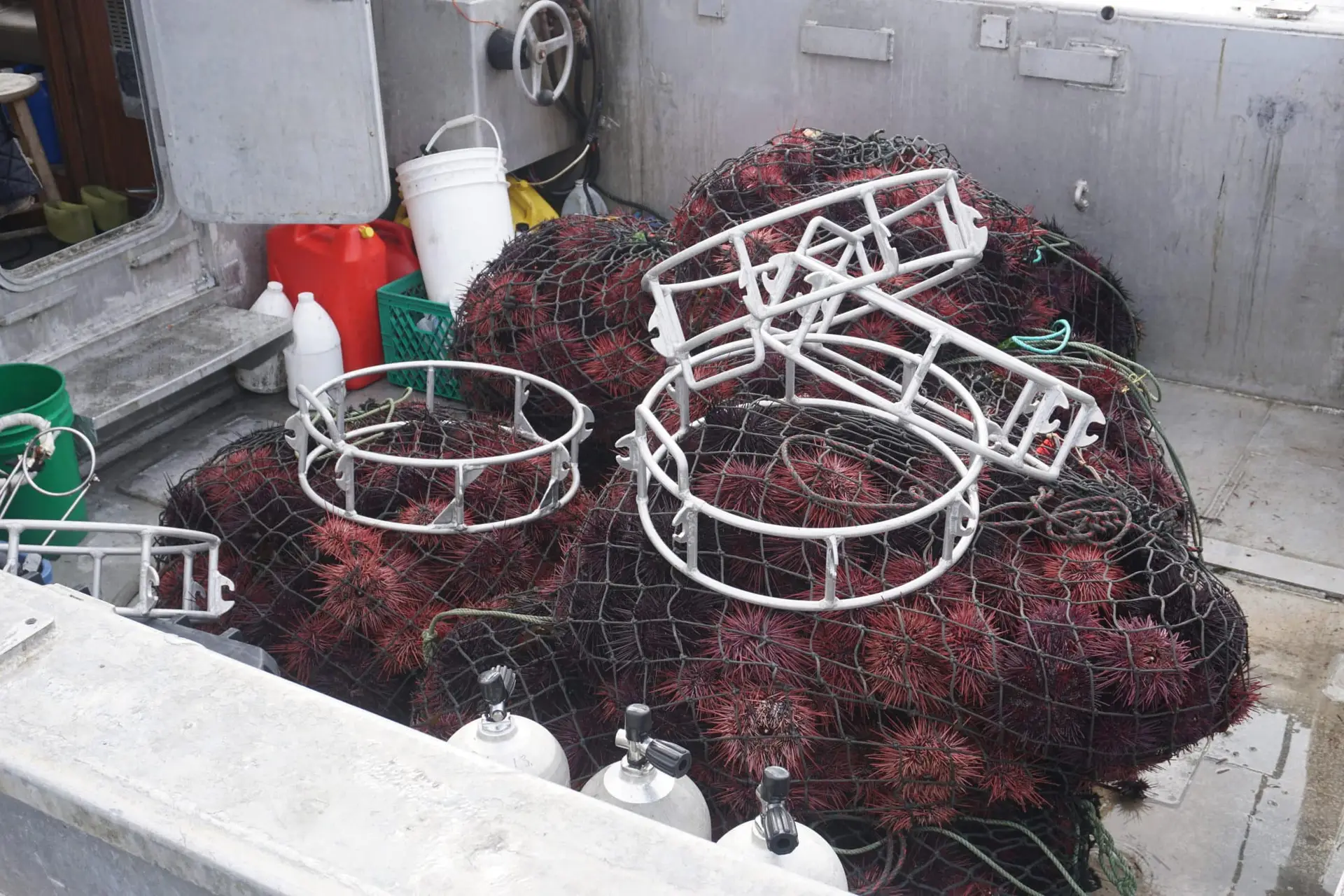
Some of the things these researchers hope to learn are how fast the urchins will move back into the site, as well as discover if having this higher production of kelp might be a way to keep them down deeper because there is a greater food supply. The group is hopeful that restoring the kelp forests, will encourage urchins and abalone to have greater densities deeper into the sub-tidal zones. By creating habitat for a more diverse range of species at higher tide levels, as well as below, the restoration project aims to ensure there’s enough food for all to live in balance with one another.
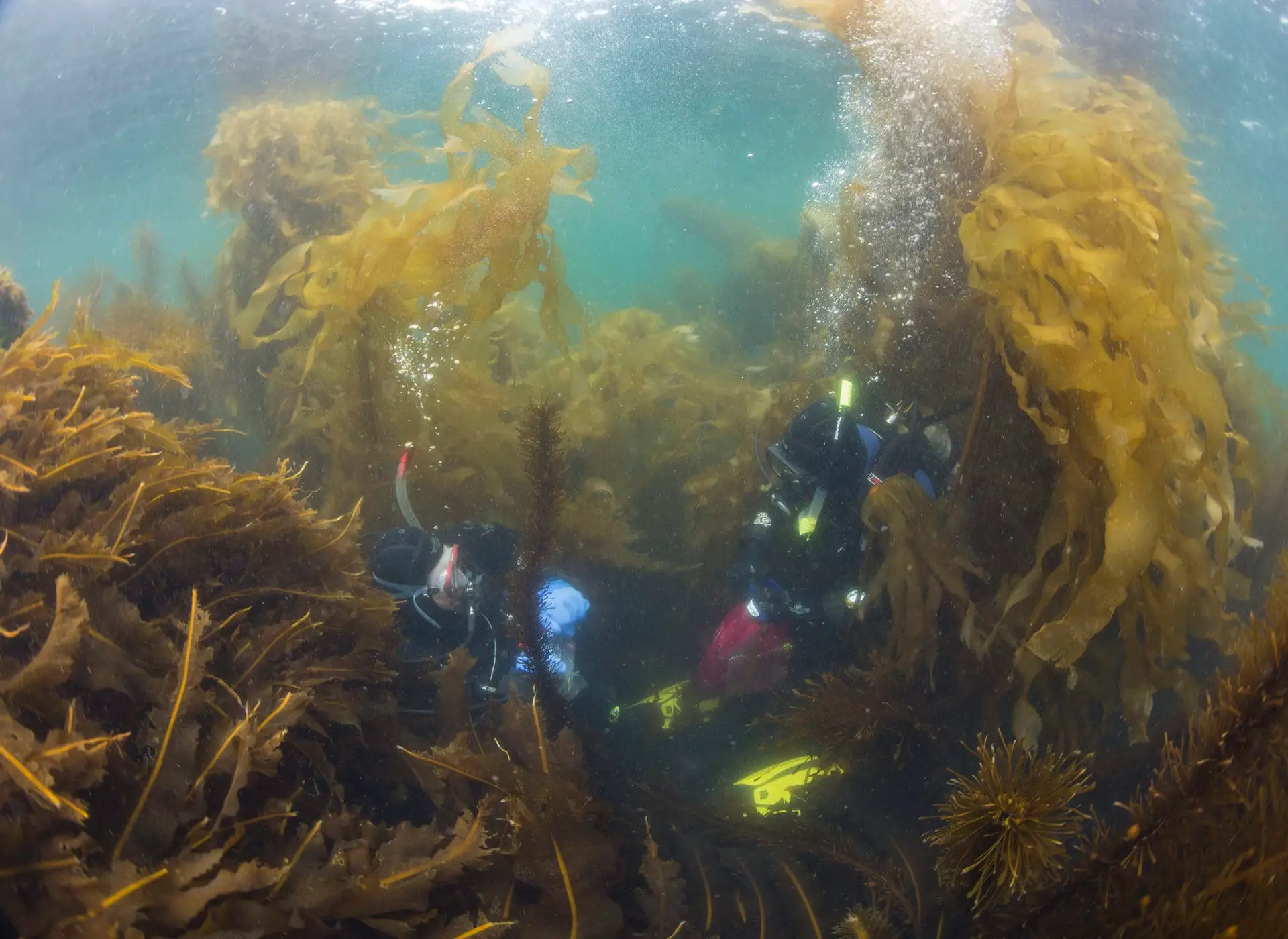
Reassembling what these ecosystems were like when sea otters were present can help paint a bigger picture of what they might be like when and if otters do return to Gwaii Haanas. “In this case, we’re able to mimic sea otters coming back without them eating the abalone. It’s good to create that habitat and at the same time not have the negative effects of sea otters on abalone.”
Lee is hopeful that although this is only a three-year project, with many partners and organizations involved, other subsequent studies will stem from this to create a valuable database that can be used across many platforms for conservation and restoration projects in the future.
Photos C/O: Project dive team, Ryan Miller, Lynn Lee, James Thompson, and Oriana Smy

